
Filter News
Area of Research
- (-) Biology and Environment (71)
- (-) Energy Sciences (1)
- (-) Materials (62)
- (-) Nuclear Systems Modeling, Simulation and Validation (2)
- Advanced Manufacturing (10)
- Biological Systems (1)
- Building Technologies (2)
- Computational Biology (2)
- Computational Engineering (3)
- Computer Science (10)
- Electricity and Smart Grid (3)
- Energy Science (140)
- Fuel Cycle Science and Technology (1)
- Functional Materials for Energy (1)
- Fusion and Fission (31)
- Fusion Energy (13)
- Isotope Development and Production (1)
- Isotopes (9)
- Materials for Computing (12)
- Mathematics (1)
- National Security (27)
- Neutron Science (33)
- Nuclear Science and Technology (42)
- Quantum information Science (9)
- Sensors and Controls (1)
- Supercomputing (70)
News Topics
- (-) Advanced Reactors (5)
- (-) Biomedical (20)
- (-) Clean Water (14)
- (-) Composites (11)
- (-) Coronavirus (14)
- (-) Grid (8)
- (-) Machine Learning (12)
- (-) Nuclear Energy (17)
- (-) Quantum Science (11)
- 3-D Printing/Advanced Manufacturing (27)
- Artificial Intelligence (15)
- Big Data (11)
- Bioenergy (52)
- Biology (74)
- Biotechnology (14)
- Buildings (5)
- Chemical Sciences (36)
- Computer Science (34)
- Critical Materials (13)
- Cybersecurity (5)
- Energy Storage (38)
- Environment (102)
- Exascale Computing (6)
- Frontier (6)
- Fusion (8)
- High-Performance Computing (24)
- Hydropower (8)
- Irradiation (1)
- Isotopes (13)
- ITER (1)
- Materials (78)
- Materials Science (82)
- Mathematics (4)
- Mercury (7)
- Microscopy (34)
- Molten Salt (3)
- Nanotechnology (42)
- National Security (5)
- Neutron Science (36)
- Partnerships (13)
- Physics (29)
- Polymers (18)
- Quantum Computing (3)
- Security (3)
- Simulation (16)
- Space Exploration (2)
- Summit (11)
- Transportation (15)
Media Contacts

ORNL scientists had a problem mapping the genomes of bacteria to better understand the origins of their physical traits and improve their function for bioenergy production.

The rapid pace of global climate change has added urgency to developing technologies that reduce the carbon footprint of transportation technologies, especially in sectors that are difficult to electrify.
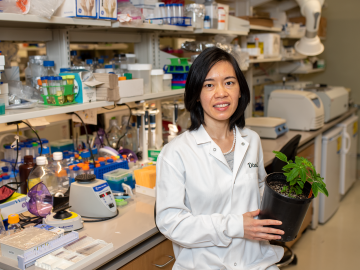
A team of researchers working within the Center for Bioenergy Innovation at ORNL has discovered a pathway to encourage a type of lignin formation in plants that could make the processing of crops grown for products such as sustainable jet fuels easier and less costly.
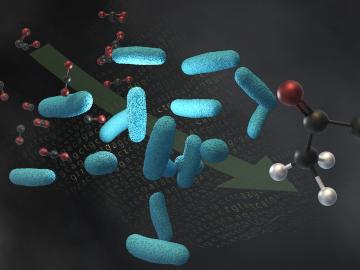
A team of scientists from LanzaTech, Northwestern University and ORNL have developed carbon capture technology that harnesses emissions from industrial processes to produce acetone and isopropanol

ORNL, TVA and TNECD were recognized by the Federal Laboratory Consortium for their impactful partnership that resulted in a record $2.3 billion investment by Ultium Cells, a General Motors and LG Energy Solution joint venture, to build a battery cell manufacturing plant in Spring Hill, Tennessee.

Spanning no less than three disciplines, Marie Kurz’s title — hydrogeochemist — already gives you a sense of the collaborative, interdisciplinary nature of her research at ORNL.
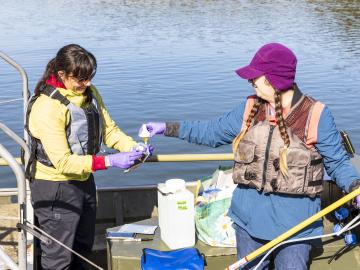
Researchers at Oak Ridge National Laboratory are using a novel approach in determining environmental impacts to aquatic species near hydropower facilities, potentially leading to smarter facility designs that can support electrical grid reliability.
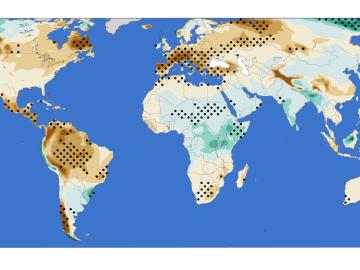
A new analysis from Oak Ridge National Laboratory shows that intensified aridity, or drier atmospheric conditions, is caused by human-driven increases in greenhouse gas emissions. The findings point to an opportunity to address and potentially reverse the trend by reducing emissions.
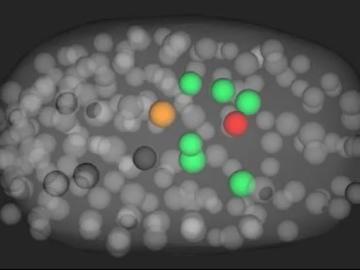
Scientists have developed a novel approach to computationally infer previously undetected behaviors within complex biological environments by analyzing live, time-lapsed images that show the positioning of embryonic cells in C. elegans, or roundworms. Their published methods could be used to reveal hidden biological activity.

A team of scientists led by the Department of Energy’s Oak Ridge National Laboratory and the Georgia Institute of Technology is using supercomputing and revolutionary deep learning tools to predict the structures and roles of thousands of proteins with unknown functions.


